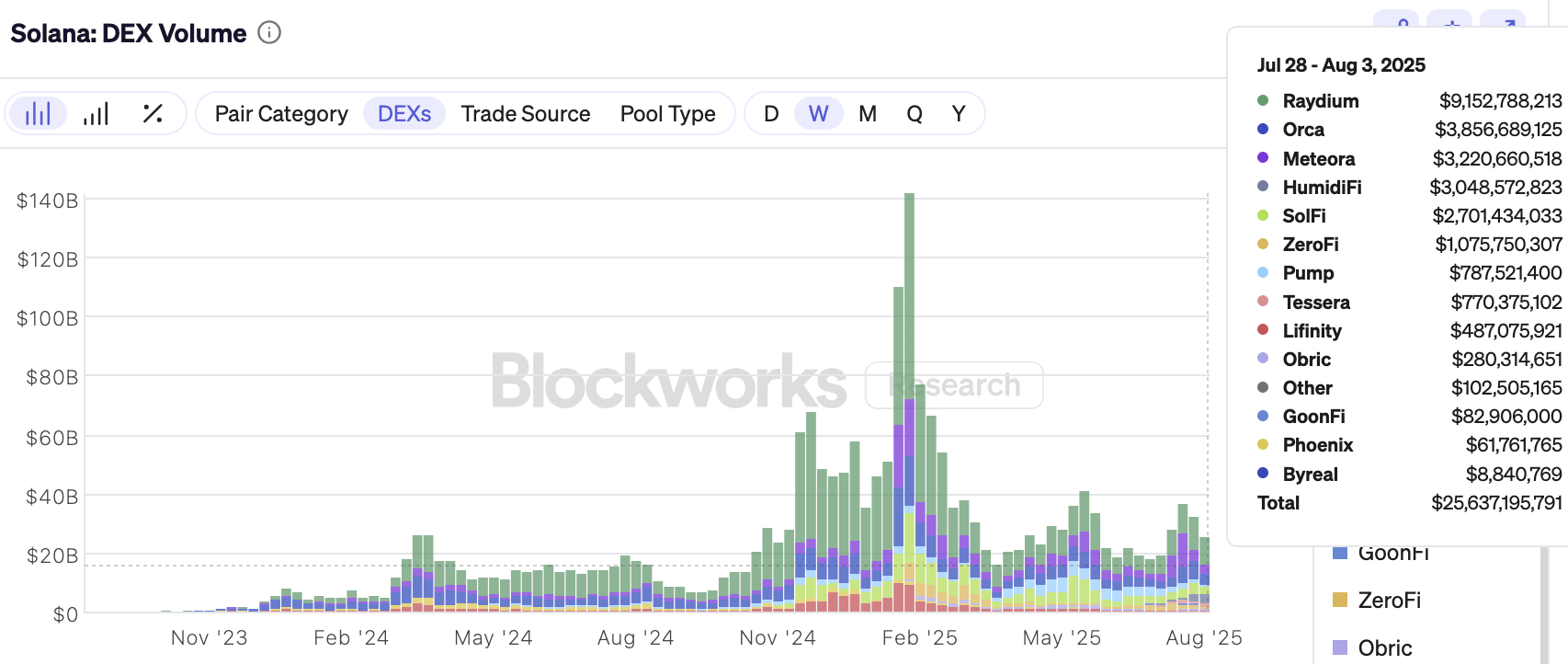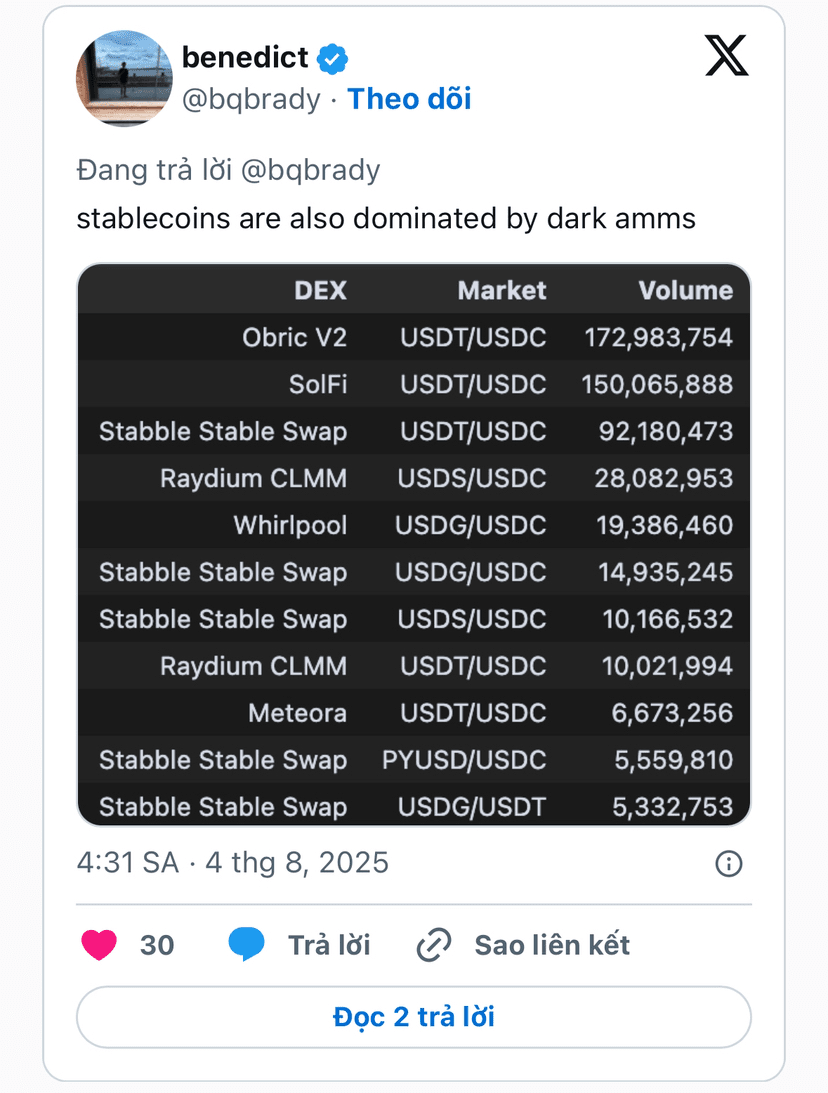Last week, a strange name unexpectedly took the lead in the Solana ecosystem: HumidiFi – a faceless, nameless exchange with no public website – but has processed nearly $3 billion in transactions, accounting for 15% of the total transaction volume on Solana.
However, its success is tied to a mystery yet to be solved: Who is behind it?
"We have no information about the development team of HumidiFi," a representative of a competing exchange shared.
On social media, many veteran crypto experts also express confusion. Meanwhile, HumidiFi and similar exchanges quietly dominate the majority of cash flow on the Solana blockchain.
The wave of "dark AMMs" sweeps across Solana.
According to data from Blockworks Research, over 30% (equivalent to about over $6 billion) of the total transaction volume on Solana last week came from underground exchanges – known as dark AMMs (automated market makers operating anonymously).

Without a user interface, without calling on the community to provide liquidity, these AMMs only interact with transaction aggregation platforms like Jupiter, where algorithms prioritize exchanges with the best prices.
This causes efficiency to gradually overshadow transparency – a principle that was once core to DeFi.
"Dark AMMs are rising due to better price optimization capabilities. Traders now prioritize efficient execution over transparency," Amir Hajian, a researcher at Keyrock, commented.
Underground competition, money flows into the pockets of the best.
The mechanism of dark AMMs makes the game a purely technical stage, where every millisecond and every percentage point determines victory or defeat.
In that environment:
Dark AMMs can actively adjust liquidity, updating prices in real-time.
Not affected by trading bots causing losses like traditional AMMs.
Not dependent on the community, fully controlling their own liquidity.
As a result, they can offer the best prices and are prioritized by platforms like Jupiter for transaction submissions – thereby attracting massive cash flow.
"If I were a Solana engineer wanting to prove real capability, then building a dark AMM is the only place worth playing," Edgar Pavlovsky, a DeFi developer on Solana, shared.
Anonymity: Strategy or evasion of responsibility?
Not just HumidiFi, prominent names like ZeroFi and GoonFi also operate in silence. No one knows who their teams are or where they come from – and they seem to want to keep everything in the dark.
However, there are still exceptions:
Wintermute, one of the largest market makers, has confirmed it operates Tessera V, a dark AMM that processed $735 million this week.
Ellipsis Labs, a Solana DeFi developer, publicly stated it is the entity behind SolFi, a once-anonymous but extremely efficient dark AMM.
The opposition between anonymity and transparency is no longer an ethical issue – but a competitive strategy.
According to Benedict Brady, founder of the data platform Meridian, dark AMMs dominate the entire stablecoin volume on Solana. And this trend shows no signs of slowing down. Because:
Traditional passive AMMs only update prices when there are trades – easily exploited by bots causing losses.
Meanwhile, dark AMMs continuously update prices, limiting losses and providing more competitive pricing.
"It's probably only a matter of time before active liquidity completely outperforms passive liquidity," Brady noted.

Blockchain was once hailed as a tool for creating an open, transparent, and decentralized finance. But now, a large portion of transactions on Solana is occurring in the dark – where traders do not know who they are trading with, and market makers do not need to appear publicly.
HumidiFi is just the tip of the iceberg. And with the current growth momentum, dark AMMs are not only reshaping DeFi on Solana – but also raising a big question for the entire cryptocurrency industry: "What are we willing to trade off for better prices?"